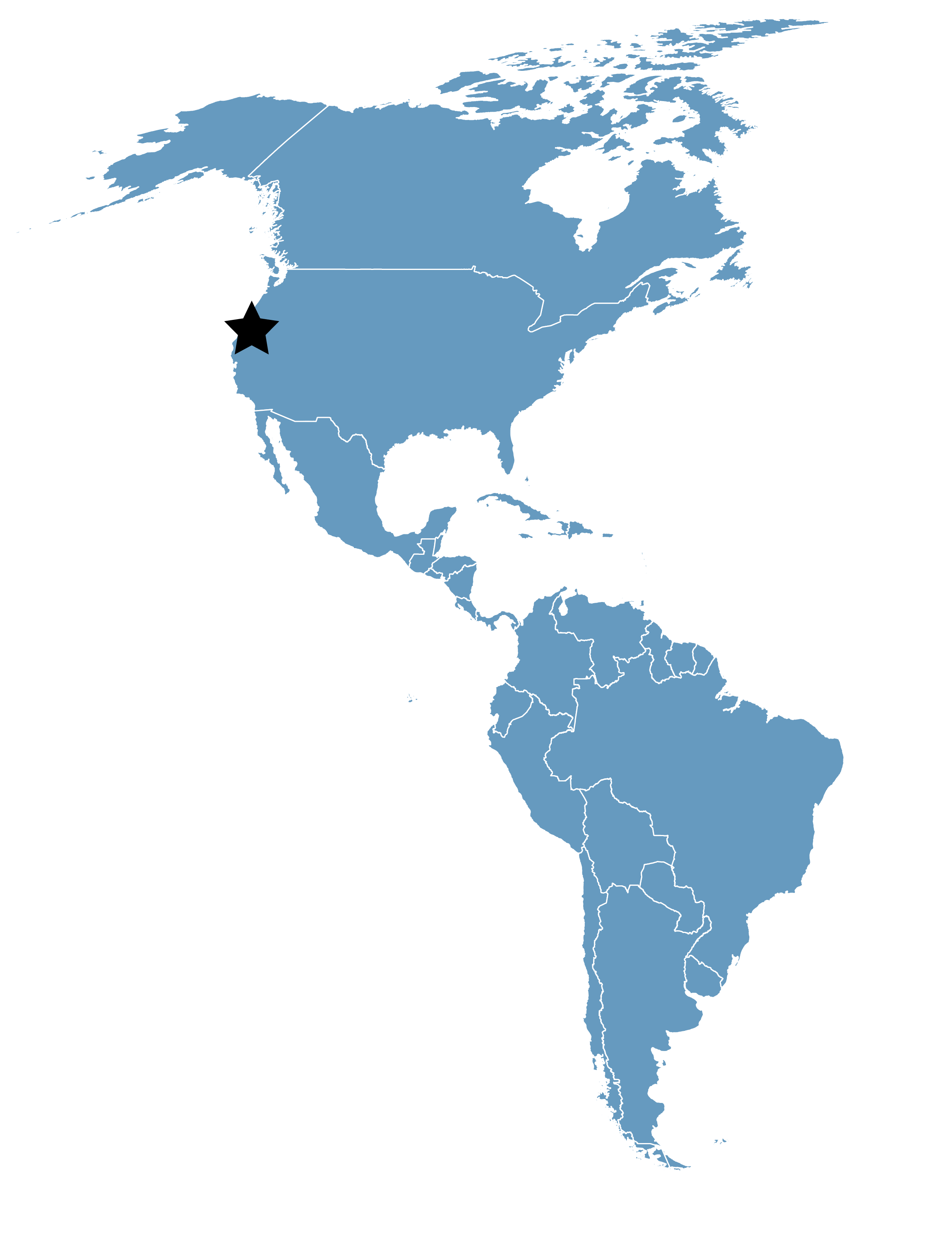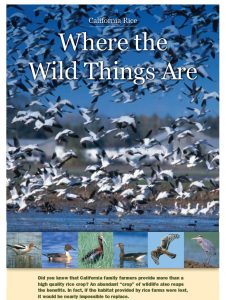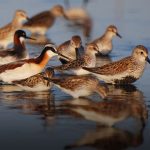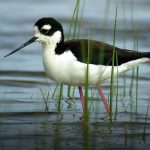Sacramento Valley
Location
California, United States
Category
International
Basis for Designation
Supports more than 100,000 shorebirds annually.
Size
249,757 hectares (617,162 acres)
Date Designated
August 2003
Site Owner
U.S. Fish and Wildlife Service
California Department of Fish and Game
Private landowners
Site Partners
California Rice Commission
Yolo Basin Foundation
Sacramento Zoo
Sacramento County
Central Valley Joint Venture
Audubon California
California Duck Days
Overview
The Sacramento Valley is located in the northern portion of California’s Central Valley, and is bordered by the Sierra Nevada Range to the east and the Coast Range to the west. The Valley floor is flat with a gentle slope to the southeast towards the Sacramento River. The Sacramento River flows through the center of the Valley, from north to south, until it meets with the San Joaquin River in the Delta and then heads west into the Pacific Ocean.
The wetlands of the Sacramento Valley are best known for their importance to waterfowl. They have historically provided a winter haven for ducks, geese, and swans. Waterfowl migrate to the Valley by the millions from as far away as the Arctic regions of Alaska, Canada, and Siberia. Next to waterfowl, shorebirds are the most abundant aquatic birds using Valley wetlands, with peak populations ranging from 134,000 in early fall to 335,000 in spring (Shuford et al. 1998).
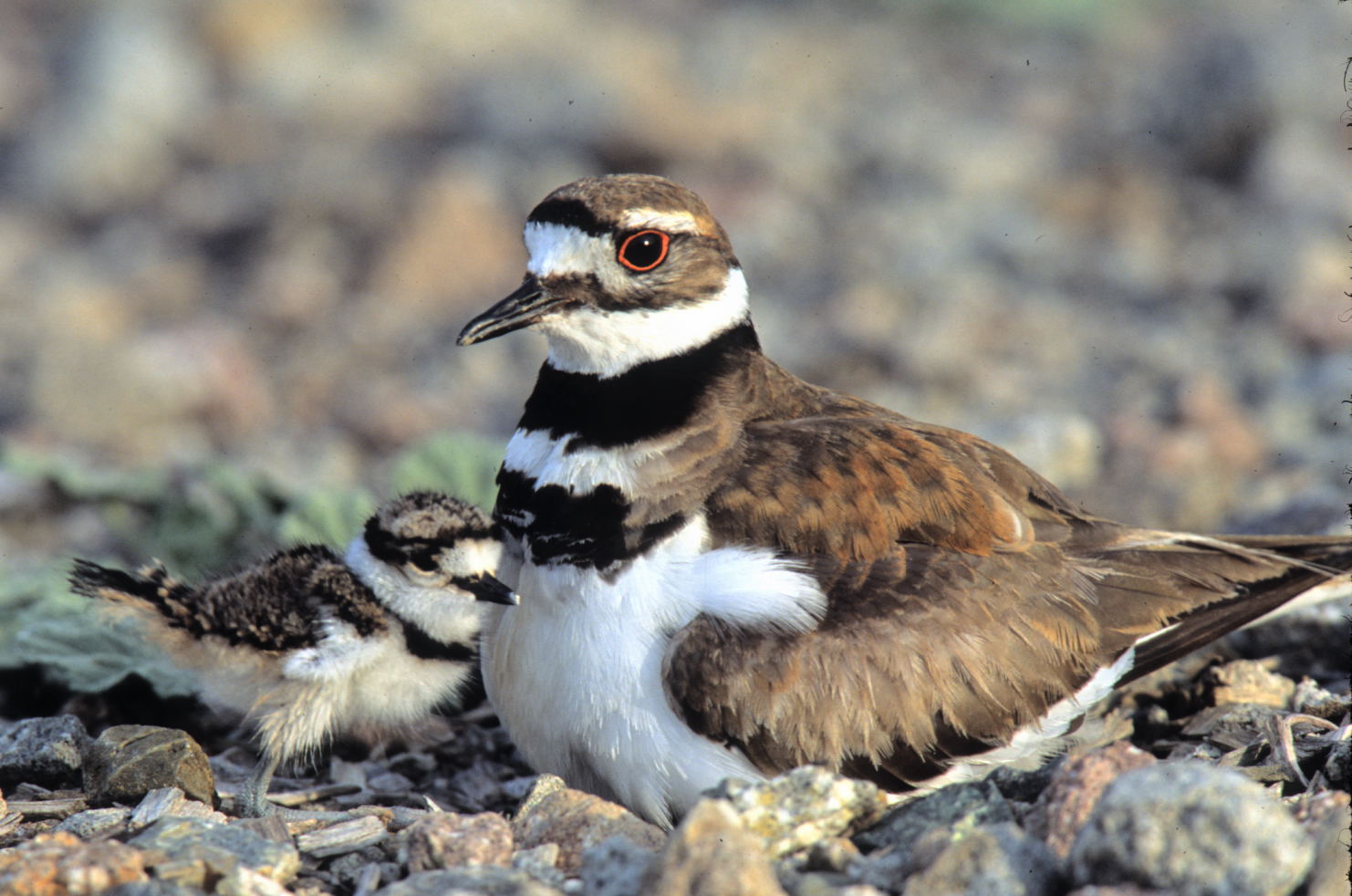
Killdeer and chick. Photo: Mike Peters.
With the development of agriculture in the mid-nineteenth century, the vast seasonal wetlands and grasslands that once existed in the Valley were replaced by rice and other crops. Levees were constructed to confine the rivers for irrigation and flood control, preventing the natural flooding of wetlands. More than 90 percent of California’s historic wetlands have disappeared, leaving the remaining 10 percent under the management of private waterfowl hunting clubs, State Wildlife Management Areas, and federal National Wildlife Refuges.
Despite these changes, birds continue to fly their ancient migration routes. The wetlands that remain are intensively managed and, along with many thousands of acres of harvested rice, are intentionally flooded during the fall, winter, and early spring to provide habitat and/or encourage decomposition of rice straw. Today the Valley is an extensive agricultural area that still maintains its status as a key wintering area for waterfowl, as well as important habitat for resident and migratory shorebirds, raptors, songbirds, and many other species.
Next to waterfowl, shorebirds are the most abundant aquatic birds using Valley wetlands, with peak populations ranging from 134,000 in early fall to 335,000 in spring.
Wildlife
The wetlands and rice fields of the Sacramento Valley are of particular importance to nearly a dozen shorebird species, including: Killdeer (Charadrius vociferous), Black-necked Stilt (Himantopus mexicanus), American Avocet (Recurvirostra Americana), Greater Yellowlegs (Tringa melanoleuca), Western Sandpiper (Calidris mauri), Least Sandpiper (Calidris minutilla), Dunlin (Calidris alpina), Long-billed Dowitcher (Limnodromus scolopaceus), Wilson’s Snipe (Gallinago gallinago), Long-billed Curlew (Numenius americanus), and Whimbrel (Numenius paheopus). Three of these species are year-round residents of the Valley, all having modest breeding populations that increase with the arrival of wintering migrants. The Killdeer, American Avocet, and Black-necked Stilt nest throughout the Valley. The remaining eight species can be found using Valley habitats throughout the fall, winter and spring, with populations peaking during early fall (August) and mid spring (April). Other shorebird migrants include Semipalmated Plover (Charadrius semipalmatus), Red-necked Phalarope (Phalaropus lobatus), Wilson’s Phalarope (Phalaropus tricolor), and Black-bellied Plover (Pluvialis squatoarola). These species can be found in small numbers throughout the Valley on a regular basis during migration periods. Spotted Sandpiper (Actitis macularius) can also be found nesting along the Valley’s waterways, river banks, and foothill tributary streams.
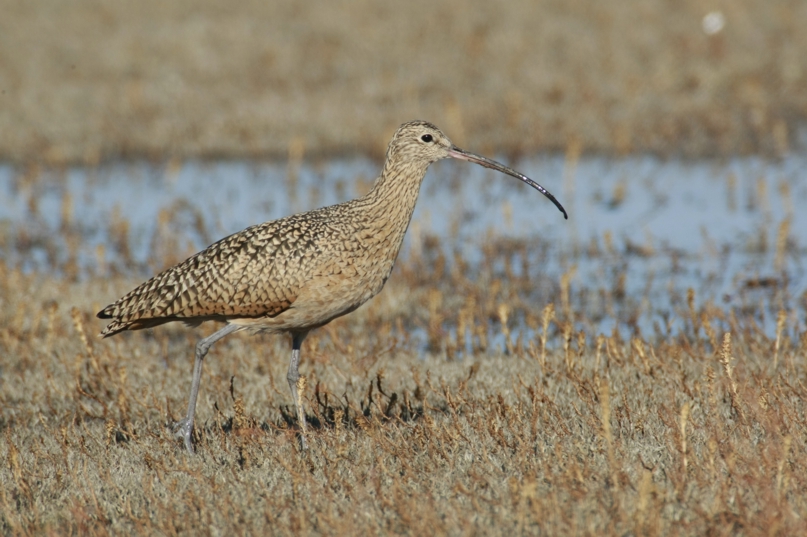
Long-billed Curlew in seasonal wetlands. Photo: Steve Emmons.
The Valley holds significant numbers of several species of wintering ducks and geese, as well as breeding Cinnamon Teal, Gadwall, Mallard, and Wood Duck. These plentiful shorebird and waterfowl concentrations attract raptors, especially Northern Harrier, Peregrine Falcon, and Bald Eagle.
Many other bird species benefit from the wetlands and rice fields of the Valley, including Great Blue Heron, Great Egret, Snowy Egret, Black-crowned Night Heron, American Bittern, American White Pelican, Sandhill Crane, White-faced Ibis, American Coot, Common Moorhen, Virginia Rail, Sora, Pied-billed Grebe, Double-crested Cormorant, Black Tern, and Red-winged, Tricolor, and Yellow-headed Blackbirds. In addition to its avian inhabitants, the Valley is host to many reptile, amphibian, fish, mammalian and invertebrate species, such as giant garter snake, western pond turtle, otter, beaver, deer, and coyote.
Conservation and Management
Currently there are nearly 150,000 acres of protected habitat in the Sacramento Valley. Of these, approximately 75,000 are owned by the US Fish and Wildlife Service or the California Department of Fish and Game. The majority of the remaining protected acres are privately owned and under conservation easement with state, federal, or non-profit agencies.
Water availability and quality, urban expansion, changing crop conversion and agricultural practices, contaminants (e.g., pesticides in agricultural lands, sewage ponds). Southern Sutter and northern Sacramento counties are zoned for urban development. A predicted 18 million people will move into Central Valley in the next 40 years.
Intensive agriculture and aircraft are major causes of disturbance, though they likely do not have a population level effect on the bird species.
Although most of the Sacramento Valley’s historic wetlands have been converted to agriculture, certain types of agriculture – chiefly rice cultivation – help to sustain wetland-dependent species by creating a habitat type that provides breeding and wintering habitat for waterfowl, shorebirds, wading birds, and other wildlife. Each year, hundreds of thousands of acres are planted in rice. These fields are flooded during the summer growing season, and as a result of straw burning legislation, many fields are re-flooded following fall harvest in an effort to decompose rice straw (Brouder and Hill 1995). The waste grain that remains in the fields after harvest provides an invaluable food source for the wintering waterfowl population. During winter storms, dry fields will flood and drain periodically, providing shorebirds with shallow habitat and access to invertebrate food sources.
Resources
Management Issues:
- Water level and vegetation management strategies beneficial to migrating and breeding shorebirds need to be promoted and implemented on a broad scale.
- Wetlands and flooded agriculture need reliable water supplies.
Research Priorities
- Energetic requirements
- Patterns of use and movement
- Status and trend of high priority species and breeders
- Value of waterfowl brood pond management to breeding shorebirds




